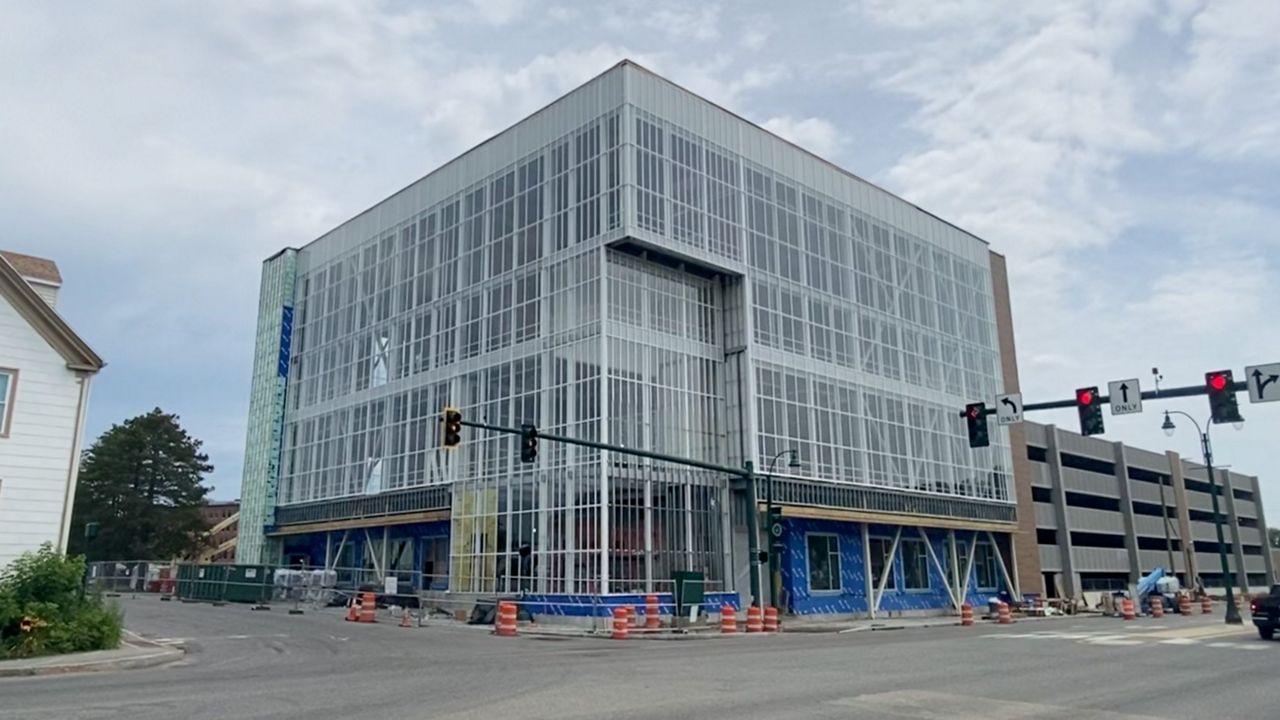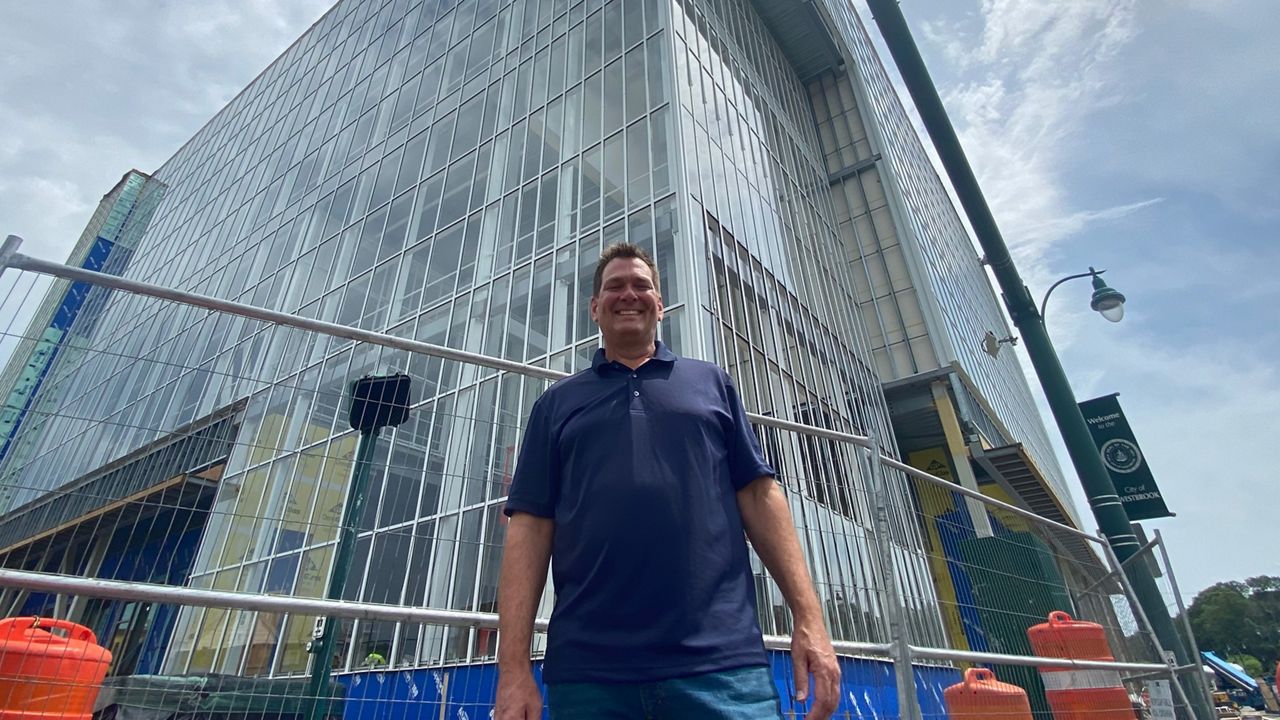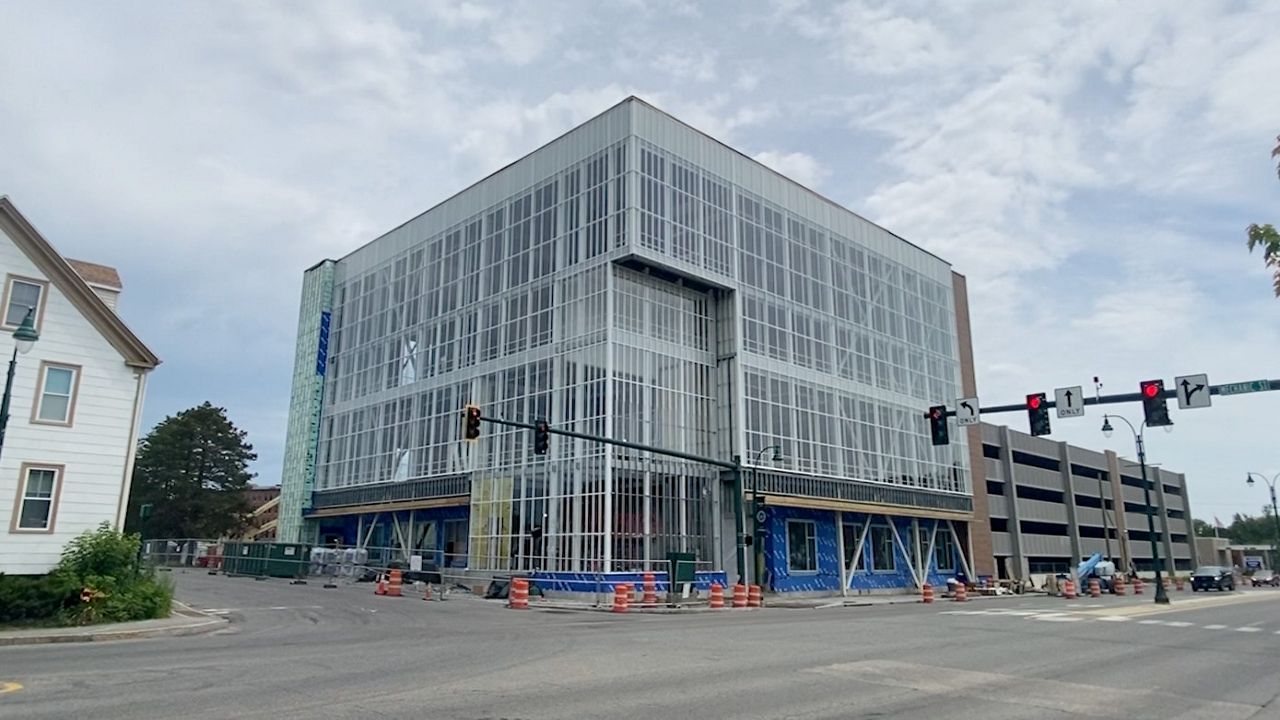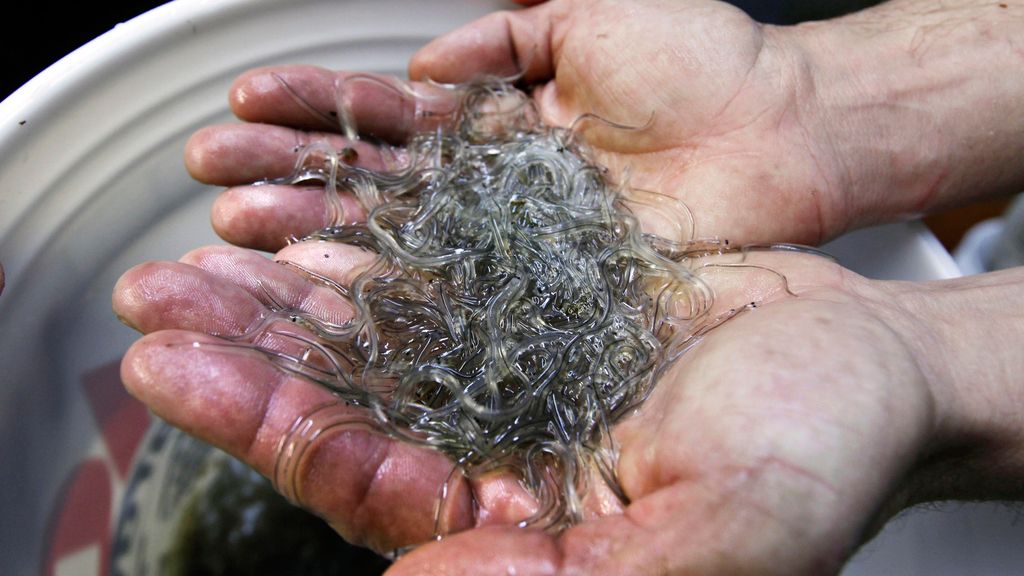One of the newest buildings in Westbrook’s downtown is promising futuristic technology that will produce as much as 2 million pounds of fresh produce for Mainers every year.
Meanwhile, one local official sees it as a gateway to long-awaited new development in the area.
Vertical Harvest, a company based in Jackson Hole, Wyoming, is building a four-story building that will grow the produce using vertical farming, a new wave of farming that allows plants to grow virtually anywhere.
“There’s a lot of efficiency that goes into this type of farming,” said Nona Yehia, the company’s CEO.
The building occupies what was once an enormous parking lot on Mechanic Street in downtown Westbrook. The farm, along with an accompanying parking garage, is key to ambitious plans for the area’s future, according to Dan Stevenson, Westbrook’s economic development director.
“It really helps define our downtown going forward,” he said.
CROPS WITHOUT SOIL, NATURAL LIGHT OR PESTICIDES
In a nutshell, vertical farming involves growing plants without using soil, without using pesticides and without using natural sunlight, according to Mark Hutton, a vegetable specialist and associate professor of vegetable crops at the University of Maine Cooperative Extension.
“You’re controlling all the variables, really,” he said. “Temperature, light intensity, light duration, fertility, humidity -- you just have complete control over the environment. Actually, they could do it inside a brick building, if they wanted to.”
The concept of growing crops without soil is not new. Hutton said scientists have been discussing it for decades, with studies on growing plants in space by NASA dating back to the 1970s.
The plants, Hutton said, are usually mounted on a platform with holes, and the roots underneath are treated with a nutrient solution, rather than being buried in soil. Growing short plants, such as lettuce, means the platforms can be stacked, growing what would normally take multiple acres of traditional farmland in a remarkably small space.
What’s new, Hutton said, is the lighting. Traditional vertical farming or other indoor farming required expensive, industrial-grade incandescent sun lamps. Starting in the mid-2000s, the advent of cheaper, energy-efficient LED lighting led to the development of LED sun lamps.
“When the cost of those started coming down for purchasing and then operating, it started to change the economics of doing indoor production,” he said.
NEW OPPORTUNITIES FOR DOWNTOWN WESTBROOK
Yehia, an architect by trade, said she started thinking about running a company in 2008, when the Great Recession caused her usual work to dry up. She said she’d heard about vertical farming working with great success in the Netherlands, and the idea of using a structure to produce food appealed to her. She has always tried to build function into her designs, she said.
“Infrastructure is really about access and increasing access,” she said. “I’ve always just seen architecture as a powerful vehicle for change.”

In 2010, the company began work on its first proof-of-concept farm in Jackson Hole, which she said the company has expanded on for the Westbrook project.
“The R&D farm that we run here in Jackson is a really great test because it’s one of the more extreme environments in the United States, with a lot of the same pressures that happen in Maine,” she said.
Stevenson said he has had his eye on the Mechanic Street area of downtown for some time now, hoping to launch new mixed-use development and even attract large businesses, such as a hotel. That couldn’t happen, he said, without a parking garage already in place, hence the joint project with Vertical Harvest and developer Greg Day, who is building the garage adjacent to Vertical Harvest’s new building.
Stevenson said the allure of a futuristic new business employing more than 60 people, along with a garage to accommodate further development, will open new doors for Westbrook’s downtown.
“We’re moving into new technology, and we can anchor our downtown with it,” he said.
The process began in 2018, followed by a groundbreaking in 2021. Stevenson said the farm is expected to be finished by mid-2024.
2 MILLION POUNDS OF PRODUCE ON A HALF-ACRE
The farm is expected to produce 2 million pounds of food a year, all in about half an acre of space, Yehia said. The farm will grow head lettuce, petite greens such as kale, spinach and arugula, and microgreens such as radish, broccoli and basil.
It will sell through a partnership with Hannaford, and also to schools, hospitals, food justice organizations and other groups.
Most importantly, Yehia said, the farm’s principal customers will be within a 150-mile radius. She said the farm’s goal is to help reinforce a movement away from massive, out-of-state farms to “a hyper-local approach.”
“Over the last hundred years, we’ve centralized farming, right? So, on average, the head of lettuce that you eat has traveled 2,000 miles to get to your plate. ... That’s no good for anyone,” she said.
Yehia said she knows the farm will only supplement traditional farming, not replace it, but she hopes the localized approach can help create traditionally rural jobs in urbanized locations. She expects to hire locally.
“We really focus on if we’re reconnecting the farm to the urban center, who is the next generation of farmers? This, for us, is critical civic infrastructure,” she said.









